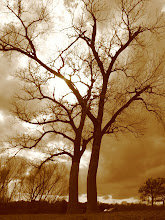As i was slowly climbing up the the steps, I kept wondering how the same Nature, which through its capricious moves (in the form of quakes, droughts, floods, volcanic eruptions and the likes) has destroyed so many civilizations and yet here has wielded a benevolent face that has preserved these priceless relics of rich, ancient civilization from the marauding invaders by completely covering the whole area into her lap with a green veil of dense forest for more than thousand years. The mighty Mughal Emperor, Aurangzeb, who found ecstatic pleasure in destroying places of worships of any religions other than Islam, came and conquered ths region. He died and was buried at a place not far from Ajanta caves. But he never could know the presence of these caves, chaityas and, bihars even although the area as a whole is named after him and the city is named as Aurangabad.
The same thing can be told about another Muslim military genius. An illiterate but endowed with
phenomenal memory, preceding the Mogul period and Aurangzeb, he shifted his capital from Delhi to the same place, and named it after him as Daulatabad. He ruled most of the part of India, had every information through his well organised administrative system and informers. Yet, Mohammed Bin Tuglagh failed to crack the code of Nature.
While remaining completely engrossed with the thought of this bewildering but benevolent and protective whims of Nature, I lost the count of time and suddenly found that we had climbed all the steps and presently were standing in front of cave no-1. The caves were excavated in a semi-circular scrap of a steep rock over-looking a narrow sinuous gorge through which flows the stream or river "Waghera" descending at the head of the ravine beyond cave no 28, in a water fall of "seven leaps".
Looking around, one can only be awe stricken to appreciate that artistic sense and mind which selected this place to excavate these caves and place of worship, absolutely in consonance with the surrounding verdant beauties of Nature. The caves are cut and aligned in a horse-shoe form. Thirty caves (including the unfinished ones) are there in the hill, which is a part of the Sahyadri Range. All these caves were not built at the same time. They had been built in a sporadic manner extended over a period from 250B.C.E. to 650 A.D.
Cave no -1 was not the first built one to be built. From the 2nd century to the1st.century B.C.E. caves 9,10,19,and 26 were built during the Satvahan Dynasty. Rest of the caves were built during the time of Harishena of Vaklaka Dynasty during a timespan of 460 A.D. to 480 A.D.
There were separate approaches to each of these caves, built in the form of a bridge from the river. The remnants of one such approaches can even be seen today. Volumes have been written and volumes will be written about the ingenuity of the masons, artisans and painters, about the murals and frescos, the use of indegenious paints and pigments, about the World's Largest Monolithic Structure ...The Kailash Temple of the nearby Ellora Caves by more competent historians and researchers whose knowledge lay beyond the reach and scope of a lay-man tourist like me, who is more interested and prefers to get awe-struck and bask in the glory of his country's reach heritage.
All of this brings me to think that i must give vent to some of my feelings in this page of a diary. Firstly, I visited this place more than forty years ago and at that time I found that bright Flood-Lights were allowed to be used, in lieu of a paltry sum of money, to allow the photographers (mainly foreigners) for taking photographs of these frescos, causing irrepairable damage to these priceless artifacts. Of course during this visit I noticed that only a very dim light was used by the guide and no other forms of lights are allowed where murals/frescos are present. But, whatever damages were to be done have already been done. Why had we taken so much time to wake up from the slumber and rise to the occasion to protect the thousands of years old National Treasures? Is it because of the long long years of servitude?
Secondly, amongst the tourist visiting the place, a major percentage of people were found to be from foreign lands armed with every bits of information and were exulting with joy while comparing those information with reality.It was a shear joy of enjoying the beauty and history of rich Indian Heritage and Civilization even though it was apparent that they were on a shoe string budget and I must accept that it was undoubtedly an endearing and delightful sight. That brings me to the next question. What about the young Indian boys and girls? What happened to the lot? The 'open-market' has churned out a generation of Noveau-Riche young elite Indians who prefer to term themselves as Gen-X,Yor Z(or have they already incorporated the Greek alphabets?). They brag to be modern, promising, enlightened and that is very close to reality but painfully they are oblivious of their own rich heritage and culture. They do not hesitate to spend money to go for sky-diving, bungee-jumping and the likes to a distant land ignoring the vast spiritual, cultural, architectural, natural treasure trove of their own beautiful Subcontinent which is waiting with open arm and tearful, downcast eyes to welcome them.
Although it cannot be generlised yet unfortunately this is the trend i observed in utter dismay...

No comments:
Post a Comment